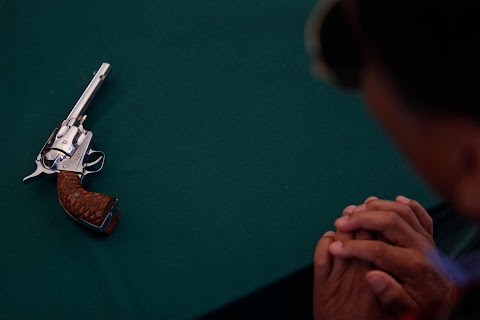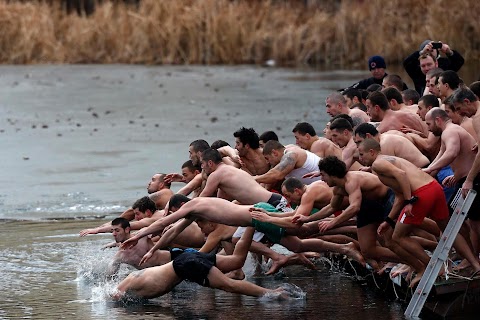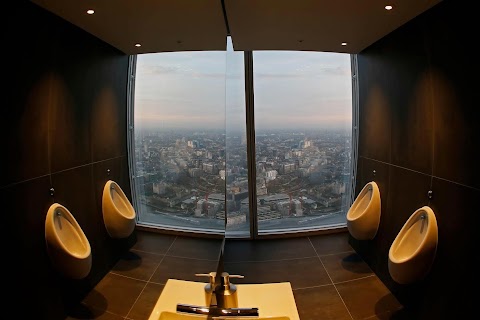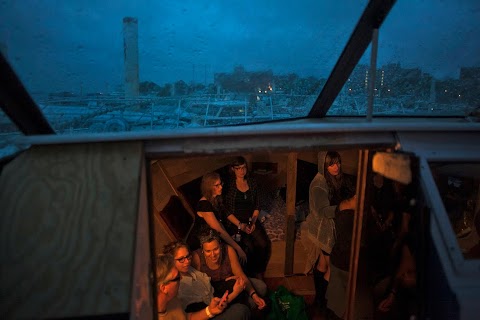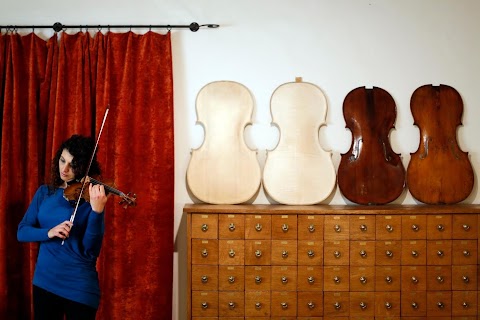
The craft of music
 Alessandro Bianchi
Alessandro Bianchi
When it comes to the violin, beautiful music tends to come from beautifully made instruments.
Mathias Menanteau has travelled and studied in cities around the world in his quest to learn the fine art of violin making. Now he has his own workshop in Rome, where he crafts and restores string instruments like the one this young woman plays.

Menanteau combines the old with the new when he works. He follows the traditional techniques and methods used by eighteenth-century Italian violin makers to create his own bow instruments. But when it comes to restoration, he also uses more modern science involving x-rays and dendrochronology - observing annual growth rings in timber to discover the date of events and changes - to perfect his instruments.
Slideshow

Restored violins are displayed in Mathias Menanteau's workshop in downtown Rome.

Menanteau works on a viola while surrounded by instruments and tools.

He uses a hand saw to cut the first turn of the scroll on the neck of a violin.

A viola's soundboards - known as its "bellies" - are displayed in Menanteau's workshop .

An assistant of Menanteau uses a fine brush to restore a violin.

Menanteau holds up a violin to inspect it in front of his workshop.

Menanteau's restored violins are lined up in a row.

A line of restored string instruments is hung up in the workshop.

Menanteau's name is printed on the bridge of one of his violins.

He arrives in his workshop holding a violin.

Menanteau poses with his cat in the garden outside his workshop.
"The bridge is considered such an important part of the violin that it takes on the role of a calling card for the craftsman."
Although I have often relished the tender melody of the violin, it wasn’t until I met Mathias Menanteau that I understood the endless passion and mastery that is necessary to create one.
Mathias, a French violin maker, was born on July 29, 1977 in Vendée, France. He moved to Newark, England and attended the international Newark Violin Making School to learn the skill of making and restoring musical instruments.
After being awarded a certificate, Mathias set out for Berlin, where he began working in the Anton Pilar violin workshop. It was in this musically rich city that Mathias deepened and acquired new knowledge of restoration, which served him well during various apprenticeships in Paris and New York.
He left Germany after five years and moved to the cradle of violin making, a city in Lombardy, Italy called Cremona. Eventually, in February of 2010, Menanteau finally opened his own violin shop in Monti, a neighbourhood in the historic centre of Rome.
Here, in addition to restoring instruments, he follows traditional techniques used by eighteenth-century Italian violin makers to create his own bow instruments, mostly inspired by those of Cremona and Venice.
Unlike the strict rules that govern the making of musical instruments, the restoration process allows some room for experimentation. Scientific discoveries including the use of x-rays to detect tunnels dug out by termites, or even dendrochronology, the science of dating events and changes by observing annual growth rings in timber, are new methods that help wood experts as well as restorers.
The making of an instrument always begins with choosing its wood, the cutting of which must be followed to perfection. String instruments generally include a fingerboard, the part that vibrates the most and which is fixed onto a soundboard, allowing the sound to be amplified.
The violin is an instrument comprised of more than fifty individual pieces, each assembled together from different kinds of wood. The soundboard is made of fir, which grows in wind-protected valleys at an altitude ranging from 1000-1500 meters (3,280 to 4,921 feet). The higher the altitude, the narrower the wood fibers, as the cold climate hinders their growth. These pine trees are selected for the sonorous quality that emerges as the woodcutter strikes the base of each trunk with his axe.
The bottom of the violin and its sides are both made from maple, a kind of wood found in the forests of central Europe, specifically in what was known as Bohemia. The fingerboard is made of high-quality ebony imported from Madagascar known as “black ivory.” Most of Menanteau’s piles of wood were acquired more than thirty years ago from old violin makers back in his days as a young apprentice in England.
Last but certainly not least, the bridge is considered such an important part of the violin that it takes on the role of a calling card for the craftsman. It is here that Mathias Menanteau, like many other master craftsmen before him, leaves his name.



